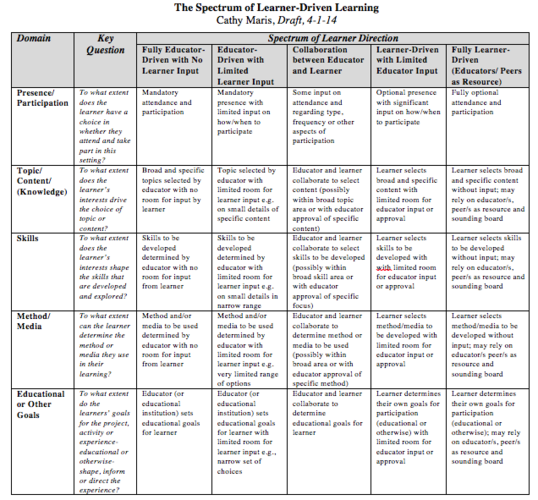Hello LCL colleagues--I'd love your input on something I developed today.
In response to a breakout group discussion in today’s session on Passion and Creative Learning, I was inspired to create a model to conceptualize variations in learner-driven learning across a range of domains. I see learner-driven learning as less of a dichotomy and more of a spectrum, with at least five interrelated elements: Presence/Participation, Topic/Content, Skills, Method/Media, and Educational or Other Goals, as outlined in the attached figure I created (I couldn't figure out how to link to a text document, so I hope this is readable).
Some learning experiences will cluster toward the extremes of the spectrum in all domains. For instance, free play among a group of neighborhood kids is likely to be child-driven in most regards. In contrast, a mandatory drivers’ education course is likely to have little room for learners’ interests. Most learning experiences will fall in the middle of the spectrum with substantial variation possible even within the same setting (including schools and informal learning environments). And, most educational settings also have very real and important constraints (e.g., educational standards) that they must balance.
This spectrum is not meant to imply a hierarchy or a value judgment. There are contexts in which it may be appropriate for learning to be more highly structured or educator driven. However, in almost every setting, there is likely to be room to enhance the influence of learner’s interests in one or more domains. A key question is: While respecting the parameters unique to each educational environment, how can we enhance the extent to which learners shape and own their lifewide and lifelong learning?
I'd love your thoughts--does this resonate for you? Do you see it differently? Are there inspirations or resources relevant to this that I should know about? Thanks for your insights and input.








